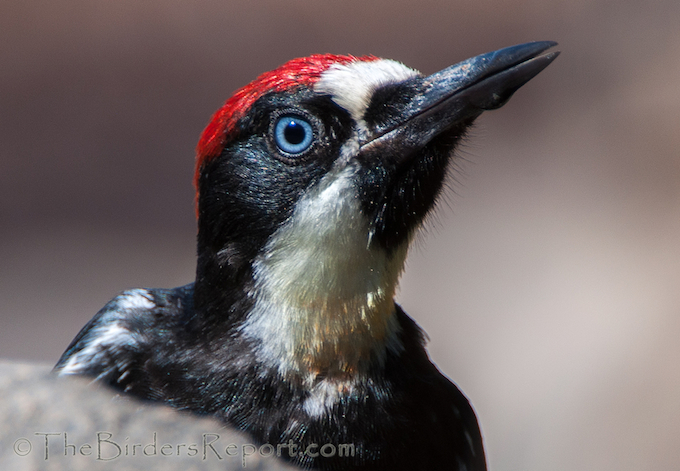 Acorn Woodpecker Juvenile (Melanerpes formicivorus) photo by Larry Jordan
Acorn Woodpecker Juvenile (Melanerpes formicivorus) photo by Larry Jordan
Acorn Woodpeckers (Melanerpes formicivorus) nest on my property here in Northern California. They are conspicuous, gregarious and a joy to watch. Click on photos for full sized images.
This woodpecker is a cooperative breeder and lives in family groups of up to a dozen or more individuals. This is an adult male sticking his head out of a natural cavity in a Gray Pine snag. Note the eye color.
These family groups forage together and the adults always bring their young to my feeding station and water feature to teach them the finer details of what it is to be an Acorn Woodpecker. This is their typical call.
The young Acorn Woodpecker, like this youngster approaching the water feature for a drink, begins its life with dark irises.
He’s not sure of what he is doing but their are several adults nearby watching him and calling to him.
The juvenile’s scarlet crown extends from its nape to its white forehead patch, similar to the adult male’s.
Here you can see the white upper tail coverts and conspicuous wing patches that are most obvious during flight.
The dark eyes of the young fledgling quickly lighten to the sky blue seen in the top photograph and by the end of the its prebasic molt (2 to 4 months post fledging) the irises are pale yellow to white like the adult’s.
These photos of the dark eyed bird were taken just three weeks before the top photo, which I believe is the same individual juvenile bird.
It’s quite the transformation don’t you think?
This is a video I took a few years ago of several Acorn Woodpeckers clowning around at my feeding station.
Also check out the great video by National Geographic on the Acorn Woodpecker and their nut stashing at the top right of the page.

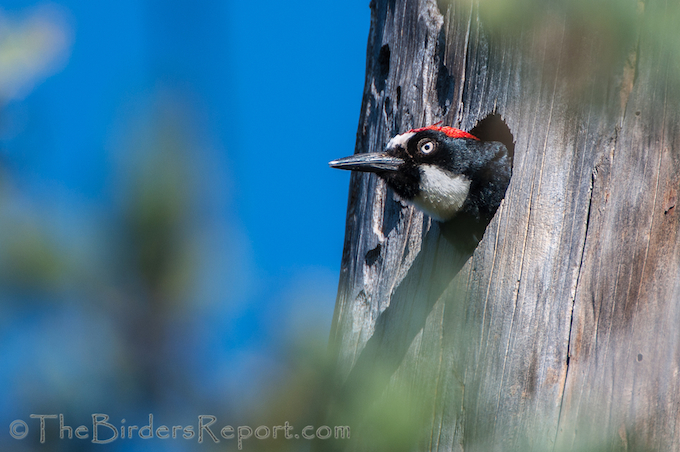
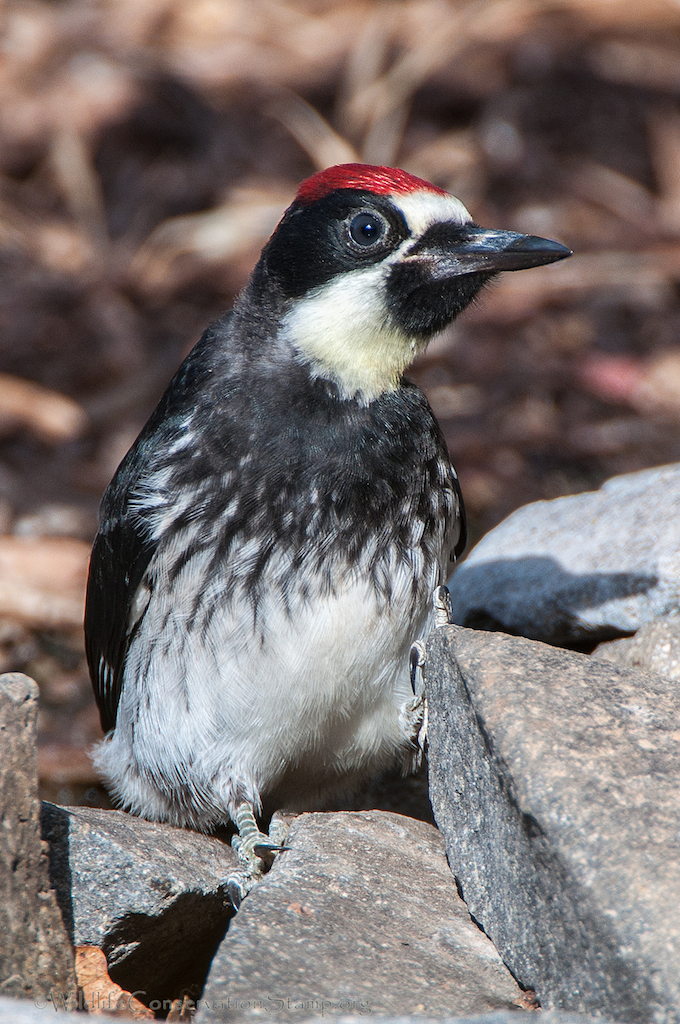
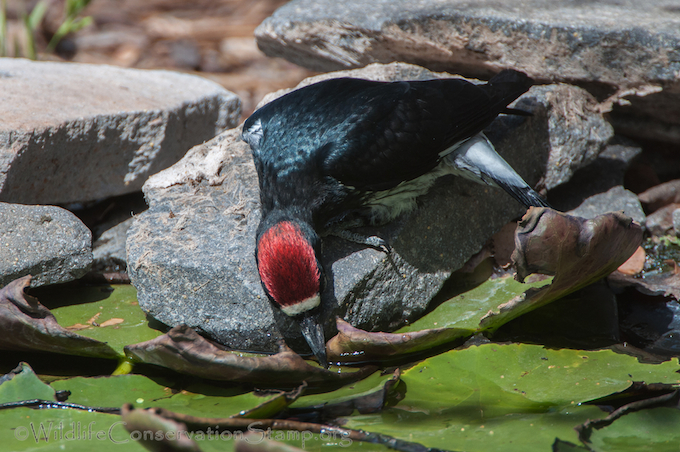
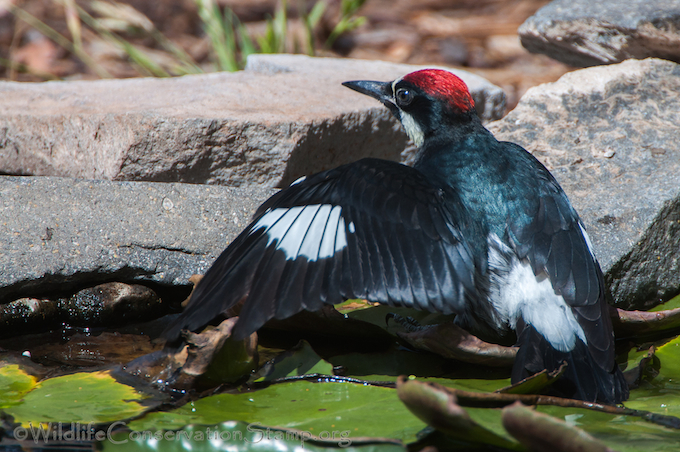
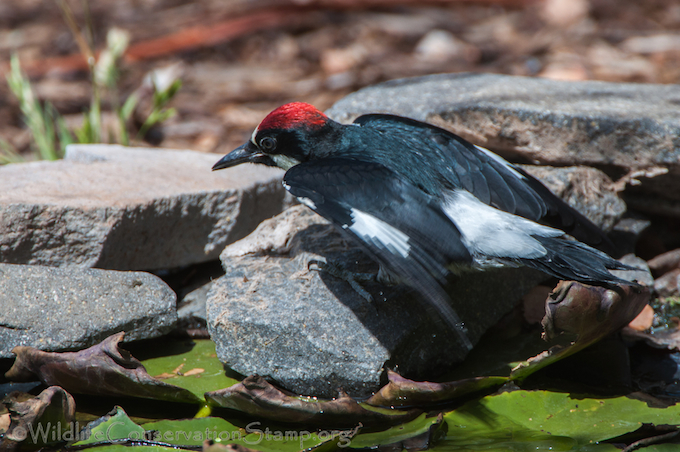
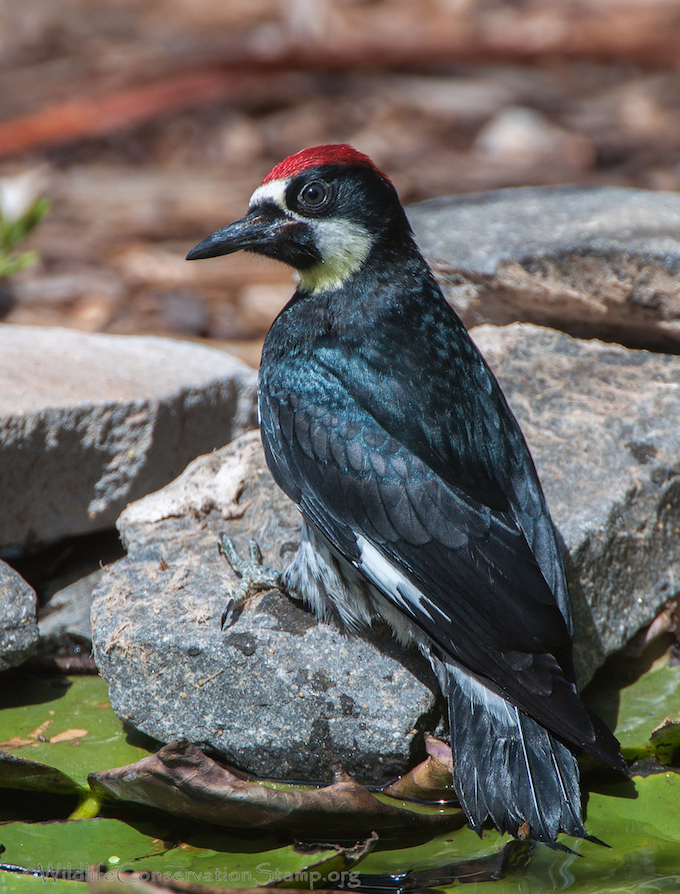
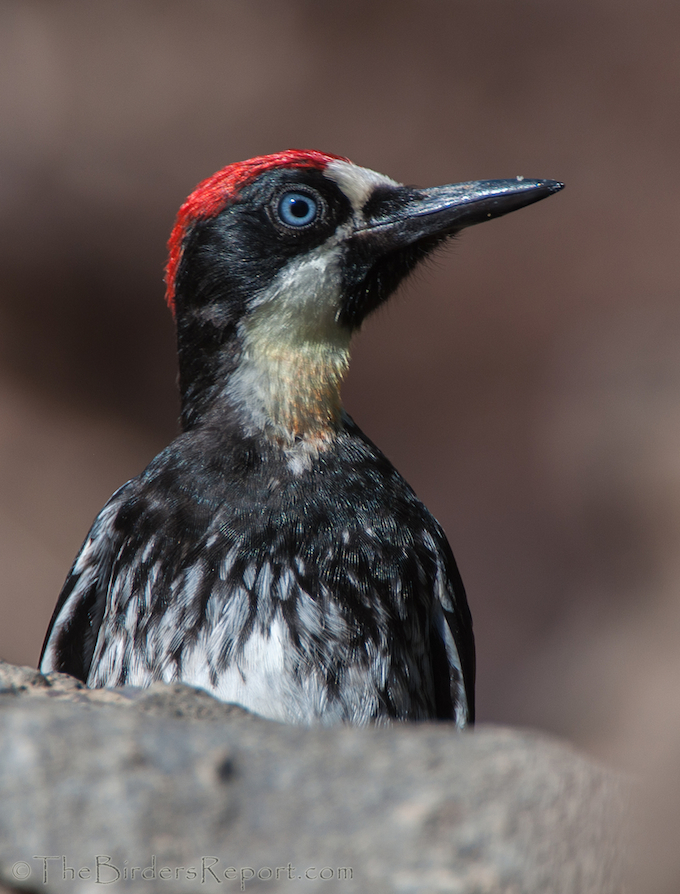








Comments on this entry are closed.
fabulous photos of this wonderful bird Larry. I also really enjoyed being able to hear it’s call, but your video nut-stashing was great to view too; tfs
Larry, this is one of my favorite birds (okay, I have a lot of faves). Interesting how the eyes transform in ways opposite to crows … where baby crows have vivid blue eyes that turn dark as they get older. Your video shows so much personality, too. We saw a ton of Acorn Woodpeckers inland from the Mendocino area, and when I mentioned my delight upon seeing so many, some of the locals didn’t share my love. I did notice, however, that the imagery of the Acorn Woodpecker was ubiquitous in the decor. They are definitely a beautiful part of that landscape. You have a bird paradise outside your door! They must really appreciate the water sources on hot summer days.
Thank you Carole!
Thanks Ingrid. I didn’t know about the crow chicks starting out with blue eyes. I understand that some people are not enthralled with Acorn Woodpeckers as they can be destructive to wooden structures and tough to discourage from pecking on your house. As for the water sources, there is nothing like having the only available water within a mile 😉
What a wonderful series of shots of this beautiful bird. Also the video was amazing as well as the one on the right. You are so fortunate to have these in your garden and be able to watch them so freely. Love the hear the water in the background of the video and also to hear their call.
Larry, wonderful post and photos on the Acorn Woodie.. This is one bird I would love to see.. Thanks for sharing, have a happy day!
I love the Acorns. Not only are the colorful and full of personality but their calls are easily heard and quite distinct. Nice close up captures on this bird. What a treat!
Great shots. Really nice portrait with great details in the first image!